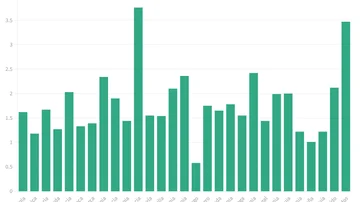The controversial proposal by the Government of Denmark to remove a holiday from your work calendar to allocate more money to military spending has already become a reality. Following last month’s demonstrations, in which thousands of Danes surrounded the Copenhagen Parliament to demonstrate against this measure, the Danish government decided on February 28 to remove the Great Day of Prayer from the calendar, a holiday celebrated on fourth Friday after Easter. With this movement he seeks increase defense spending required by NATO and reach its goal of investing a minimum of 2% of the Gross Domestic Product (GDP).
The plan presented by the current government, headed by the social democrat leader Mette Frederiksen, and the liberal parties hope get up to DKK 3.2 billion (close to 430 million euros) with the reactivation of economic activity on April 18 – the day on which the Great Day of Prayer would have to be celebrated in 2023. In this way they hope to comply with the military demands of NATO, which requires member states to allocate 2% of their GDP for Defensewhich in the Danish case would amount to around 8,000 million euros.
The unpopular decision came out of Parliament with 95 votes in favor and 68 against, mainly defended by the Social Democratic party, the Moderates, the Venstre Liberals while other sectors, such as the Church or unions, have shown themselves against of this decision. No deputy from the coalition has spoken during the debate, except for the Danish Popular Party, which has announced that it would reincorporate this festivity in the event that the right-wing formation wins in the next elections, according to Europa Press reports.
What percentage do NATO countries dedicate to Defense?
The war in Ukraine has focused on the military spending of the countries that make up NATO, especially after the Alliance meeting in Madrid last June, when the decision to raise the percentage of military spending of member countries up to 2% of GDP.
In the Spanish case, the Government of Pedro Sánchez included this part of the commitment in the General State Budget: from Moncloa it was agreed to increase defense spending by 25.8% this year 2023, going from 9,191 million euros to more than 12,300, which represents the 1.2% of GDP. The idea is to progressively increase the investment until 2029 until, finally, fulfilling the 2% NATO mandate.

Share of GDP that NATO member states allocate to defense | Flourish/laSexta
At the moment, Spain is one of the NATO countries that least part of its budget goes to Defense together with Denmark, which currently has budgeted around 1.5% of its GDP for this purpose, which represents an increase of around 450 million euros.
On the other side of the balance are Greece and the United States, those that distribute the most in military expenses, between 3.5 and 4% of their gross domestic product, although in relative terms the North American country is ahead, with more than 730,000 million budgeted for this year. Other Alliance countries that also have an important contribution are the former Baltic republics, Estonia, Latvia and Lithuania, all three already above 2%.
Source: Lasexta
Ricardo is a renowned author and journalist, known for his exceptional writing on top-news stories. He currently works as a writer at the 247 News Agency, where he is known for his ability to deliver breaking news and insightful analysis on the most pressing issues of the day.












